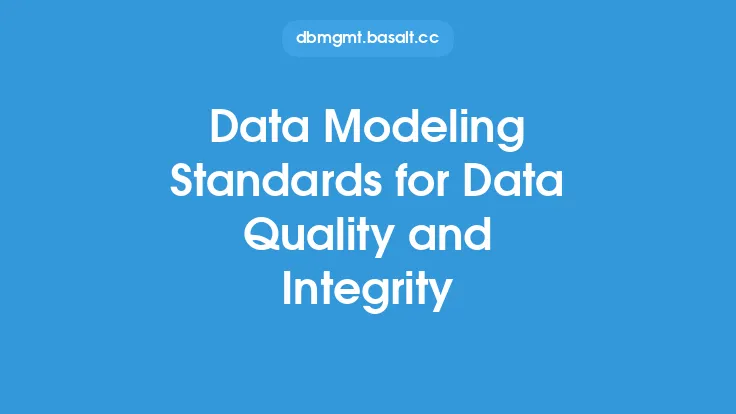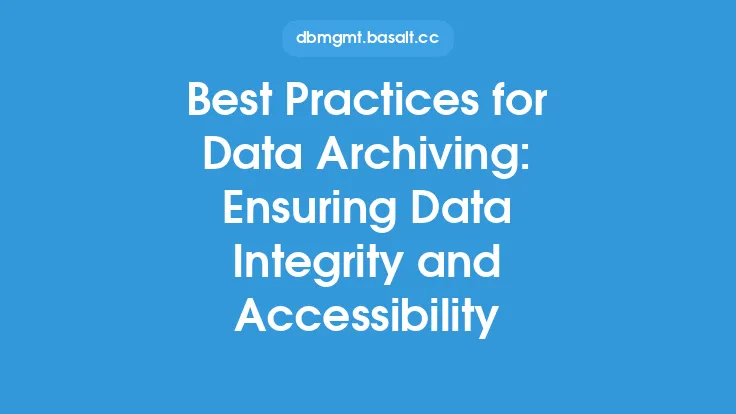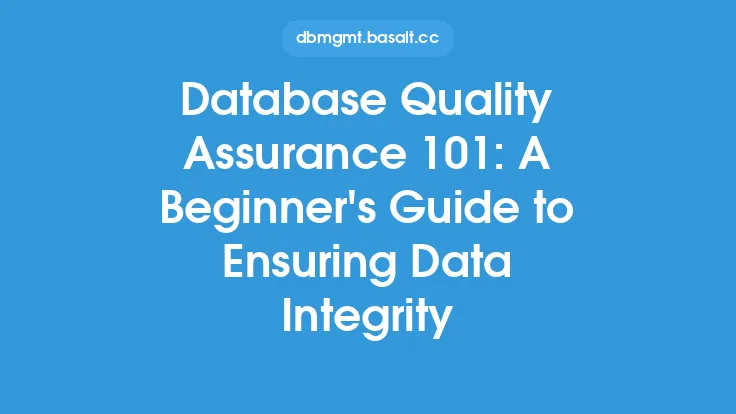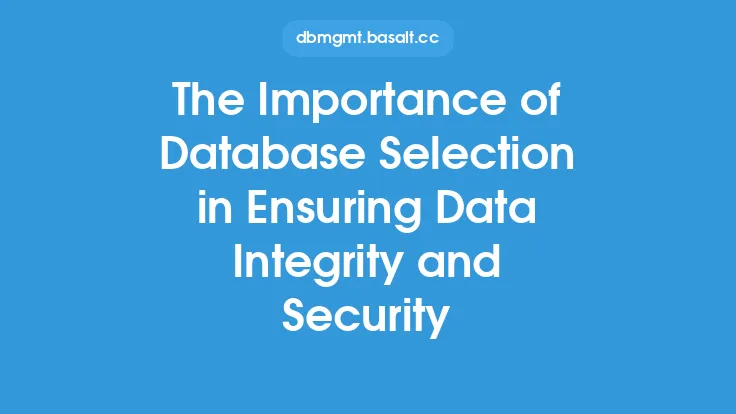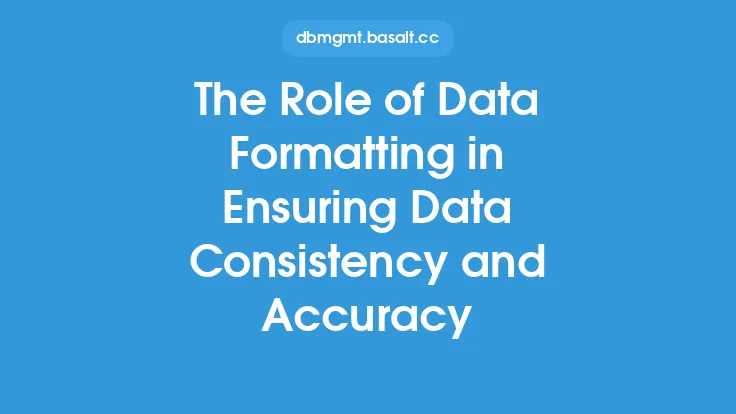Data integrity is a critical aspect of database administration, as it ensures that the data stored in a database is accurate, complete, and consistent. Data integrity standards are a set of rules and guidelines that help to maintain the quality and reliability of data in a database. These standards are essential for ensuring that data is handled correctly, from the point of entry to the point of retrieval, and that it is protected from errors, corruption, and unauthorized access.
Introduction to Data Integrity Standards
Data integrity standards are designed to prevent data errors, inconsistencies, and corruption. These standards cover various aspects of data management, including data entry, data storage, data processing, and data retrieval. By implementing data integrity standards, organizations can ensure that their data is reliable, accurate, and consistent, which is critical for making informed business decisions. Data integrity standards also help to prevent data-related problems, such as data duplication, data inconsistencies, and data loss, which can have serious consequences for an organization.
Types of Data Integrity Standards
There are several types of data integrity standards, including entity integrity, referential integrity, and domain integrity. Entity integrity ensures that each row in a table has a unique identifier, which prevents data duplication and ensures that each row can be uniquely identified. Referential integrity ensures that relationships between tables are maintained, which prevents data inconsistencies and ensures that data is consistent across related tables. Domain integrity ensures that data conforms to a specific format or range, which prevents data errors and ensures that data is consistent and accurate.
Implementing Data Integrity Standards
Implementing data integrity standards requires a combination of technical and procedural measures. Technically, data integrity standards can be implemented using database constraints, such as primary keys, foreign keys, and check constraints. Procedurally, data integrity standards can be implemented by establishing data entry procedures, data validation procedures, and data auditing procedures. Data entry procedures ensure that data is entered correctly and consistently, while data validation procedures ensure that data conforms to specific formats or ranges. Data auditing procedures ensure that data is accurate and consistent, and that any data errors or inconsistencies are detected and corrected.
Database Constraints
Database constraints are a critical component of data integrity standards. Constraints are rules that are applied to data in a database to ensure that it conforms to specific formats or ranges. There are several types of database constraints, including primary key constraints, foreign key constraints, check constraints, and unique constraints. Primary key constraints ensure that each row in a table has a unique identifier, while foreign key constraints ensure that relationships between tables are maintained. Check constraints ensure that data conforms to a specific format or range, while unique constraints ensure that each value in a column is unique.
Data Validation
Data validation is an essential aspect of data integrity standards. Data validation ensures that data conforms to specific formats or ranges, which prevents data errors and ensures that data is consistent and accurate. There are several types of data validation, including format validation, range validation, and checksum validation. Format validation ensures that data conforms to a specific format, such as a date or time format. Range validation ensures that data falls within a specific range, such as a numeric range. Checksum validation ensures that data has not been corrupted or altered during transmission or storage.
Data Auditing
Data auditing is a critical component of data integrity standards. Data auditing ensures that data is accurate and consistent, and that any data errors or inconsistencies are detected and corrected. There are several types of data auditing, including manual auditing and automated auditing. Manual auditing involves manually reviewing data to detect errors or inconsistencies, while automated auditing involves using software tools to detect errors or inconsistencies. Data auditing can be performed on a regular basis, such as daily or weekly, or on an ad-hoc basis, such as when data is updated or modified.
Benefits of Data Integrity Standards
Data integrity standards offer several benefits, including improved data accuracy, improved data consistency, and improved data reliability. Data integrity standards also help to prevent data-related problems, such as data duplication, data inconsistencies, and data loss, which can have serious consequences for an organization. Additionally, data integrity standards help to ensure that data is protected from errors, corruption, and unauthorized access, which is critical for maintaining the trust and confidence of stakeholders.
Best Practices for Implementing Data Integrity Standards
There are several best practices for implementing data integrity standards, including establishing clear data entry procedures, establishing clear data validation procedures, and establishing clear data auditing procedures. Organizations should also establish a data governance framework, which outlines the policies and procedures for managing data. Additionally, organizations should provide training to employees on data integrity standards and procedures, and should regularly review and update data integrity standards and procedures to ensure that they remain effective and relevant.
Common Challenges and Solutions
Implementing data integrity standards can be challenging, especially in large and complex organizations. Common challenges include data silos, data inconsistencies, and data errors. Data silos occur when data is stored in multiple locations, making it difficult to manage and maintain. Data inconsistencies occur when data is not consistent across different systems or applications. Data errors occur when data is incorrect or incomplete. To overcome these challenges, organizations can implement data integration solutions, such as data warehousing and data virtualization, which help to consolidate and integrate data from multiple sources. Organizations can also implement data quality solutions, such as data profiling and data cleansing, which help to detect and correct data errors and inconsistencies.
Conclusion
Data integrity standards are essential for ensuring the accuracy, completeness, and consistency of data in a database. By implementing data integrity standards, organizations can prevent data-related problems, such as data duplication, data inconsistencies, and data loss, and can ensure that data is reliable, accurate, and consistent. Data integrity standards can be implemented using a combination of technical and procedural measures, including database constraints, data validation, and data auditing. By following best practices and overcoming common challenges, organizations can ensure that their data is of high quality and is protected from errors, corruption, and unauthorized access.

